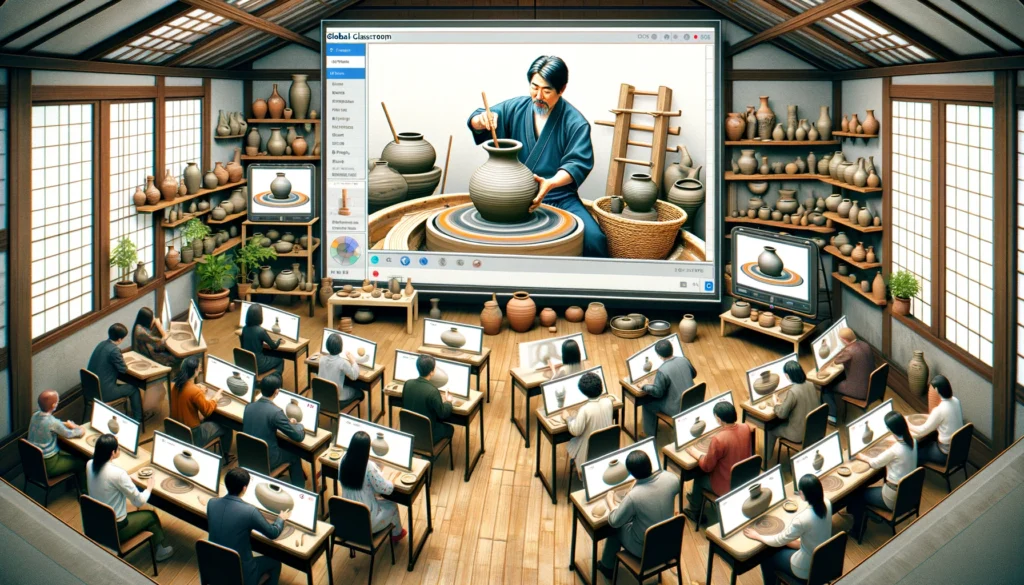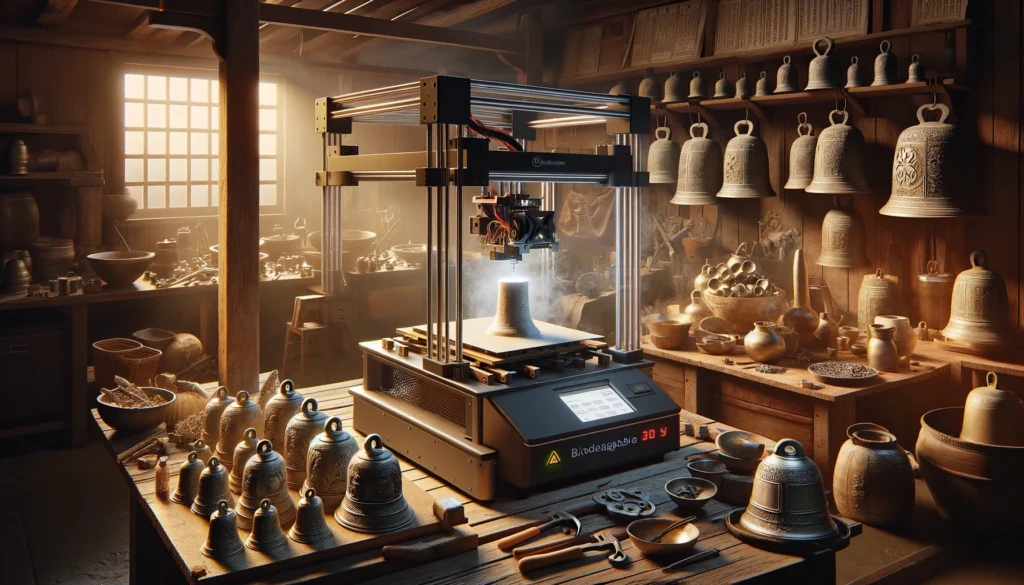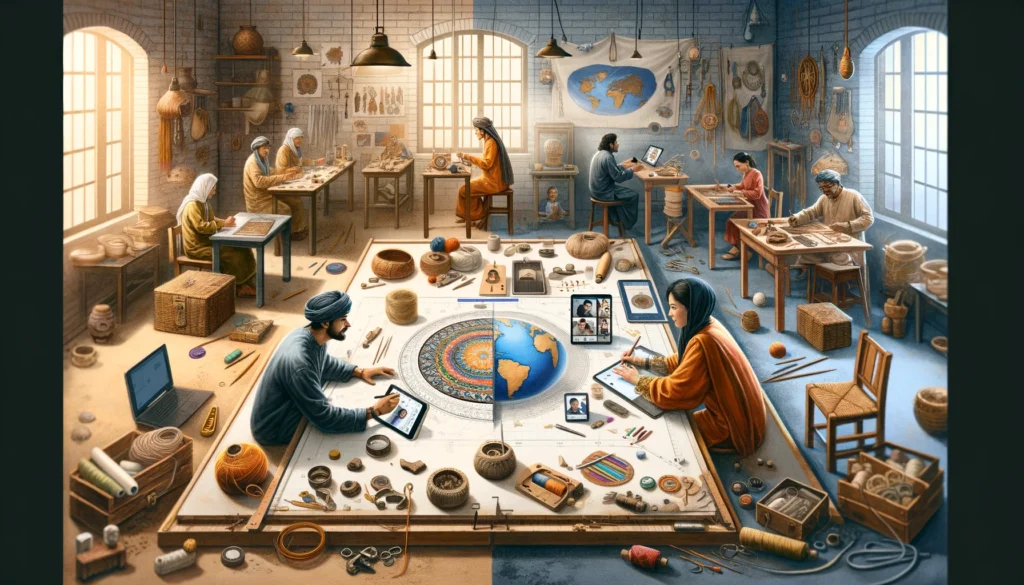As we stand on the cusp of a new era, the world of traditional crafts is transforming, driven by the integration of educational programs and the advent of groundbreaking technologies. This evolution is not just about preserving the past but is a forward-looking journey that merges the richness of tradition with the possibilities of the future. Let’s explore how these elements are coming together to redefine craftsmanship for the next generation.
Educational Programs: Bridging the Gap
As we navigate through the intersection of tradition and innovation, educational programs stand as critical bridges, connecting the rich tapestry of traditional crafts with the dynamic world of modern technology. These programs, ranging from online courses to interactive workshops, are not just about teaching skills; they’re about cultivating a deep appreciation for the artistry and cultural significance of crafts while equipping a new generation of artisans with the tools to innovate and adapt in a digital age.

Crafting New Learning Pathways
The landscape of educational programs for traditional crafts is as diverse as the crafts themselves, each pathway offering a unique blend of history, technique, and technology.
- Online Platforms and Virtual Workshops: In an era where learning transcends physical boundaries, digital platforms like Coursera, Udemy, and specialized craft education websites are democratizing access to traditional craft education. Virtual workshops, often led by master artisans, provide an intimate learning experience, allowing participants to dive into the nuances of crafts from woodworking to textile arts, all from their living room. These platforms also offer the flexibility to explore a wide array of crafts, fostering a lifelong learning mindset among enthusiasts and professionals alike.
- Hybrid Crafting Methods: The future of traditional crafts lies in the seamless integration of age-old techniques with cutting-edge technology. Educational programs are increasingly incorporating lessons on how to use CAD software for design planning, 3D printing for creating intricate parts of jewelry, or laser cutting for precise fabric patterns. These hybrid courses not only preserve the essence of traditional crafts but also open up new avenues for creative expression and entrepreneurship. By learning to merge digital design with manual execution, artisans can push the boundaries of what’s possible, crafting items that are both rooted in tradition and reflective of contemporary aesthetics.
Educational programs are not just bridging the gap between traditional crafts and modern technology; they are creating a new landscape where learning is boundless, and the future of craftsmanship is bright. Through these innovative pathways, we are ensuring that the legacy of traditional crafts is preserved, celebrated, and evolved in the digital age.
Looking Ahead: Future Trends in Traditional Crafts and Technology
As we peer into the horizon of traditional crafts melded with modern technology, it’s clear that we are on the brink of a renaissance in craftsmanship. This exciting future is shaped by the continuous evolution of technology and the enduring value of heritage crafts. Here, we explore the trends poised to redefine the landscape of traditional crafts, ensuring their relevance and appeal in a rapidly changing world.

Embracing AI and Machine Learning
The integration of Artificial Intelligence (AI) and Machine Learning (ML) into the world of traditional crafts opens up a realm of possibilities that were previously unimaginable. These technologies are set to transform the way artisans create, market, and innovate.
- Design and Pattern Generation: AI algorithms can analyze historical data and cultural motifs to generate new designs that maintain the essence of traditional styles while introducing innovative twists. This not only speeds up the creative process but also ensures that new creations are deeply rooted in tradition.
- Market Analysis and Personalization: Machine learning tools can sift through vast amounts of data to identify trends, predict consumer preferences, and tailor products to meet specific market needs. This capability enables artisans to craft items that resonate with contemporary consumers while preserving the authenticity of their traditional methods.
Augmented Reality and Virtual Reality
The advent of Augmented Reality (AR) and Virtual Reality (VR) technologies marks a new chapter in the interaction between artisans, their crafts, and the global audience. These tools are making the immersive experience of traditional crafts accessible to anyone, anywhere.
- Enhanced Interactive Learning: Through VR, enthusiasts can virtually step into artisans’ workshops around the globe, gaining hands-on experience in crafts they would otherwise never encounter. AR applications can overlay instructional content onto physical objects, guiding users through the crafting process step by step.
- Virtual Marketplaces and Exhibitions: Imagine browsing a virtual marketplace where AR allows you to visualize how a handcrafted piece of decor would look in your home or try on traditional jewelry virtually through VR. These technologies could revolutionize how traditional crafts are presented, appreciated, and purchased online, offering a richer, more interactive customer experience.

The Synergy of Tradition and Innovation
The future trends in traditional crafts and technology highlight a world where the past and future coexist harmoniously. This synergy not only ensures the survival of traditional crafts but also elevates them to new heights of innovation, appeal, and accessibility.
- Sustainable Crafting through Technology: As the world becomes increasingly eco-conscious, technologies that enable sustainable crafting practices will become more prevalent. From materials sourced through AI-powered supply chains to energy-efficient crafting techniques powered by smart technologies, the future of crafts is green.
- Global Artisan Networks: Technology facilitates the formation of global networks among artisans, fostering collaboration and knowledge sharing. These networks can amplify the reach of traditional crafts, bringing them into the global spotlight and ensuring their preservation and propagation.

Author’s Note
This journey through the evolving landscape of traditional crafts highlights a world where heritage and innovation walk hand in hand. As we continue to explore this fusion, let’s celebrate the endless possibilities that lie at the intersection of tradition and technology, ensuring that the crafts of yesterday flourish tomorrow.
G.C., Ecosociosphere contributor.
References and Further Reading
- “Digital crafting: a new frontier for material design” – A comprehensive exploration of how digital tools and online learning platforms are transforming traditional crafts.
- “Craft business and technology: bridging tradition and innovation” – A look at the potential of technologies in crafting, including case studies and expert opinions.
- “Crafting A Sustainable Future” – A guide to integrating sustainable practices into traditional crafts, highlighting the role of technology in achieving eco-friendly outcomes.
By weaving together the threads of education, technology, and tradition, we’re crafting a future that respects the past while boldly embracing the possibilities of tomorrow.





Comments
Your point of view caught my eye and was very interesting. Thanks. I have a question for you.
Can you be more specific about the content of your article? After reading it, I still have some doubts. Hope you can help me.
Your article helped me a lot, is there any more related content? Thanks!
Thank you for your sharing. I am worried that I lack creative ideas. It is your article that makes me full of hope. Thank you. But, I have a question, can you help me?